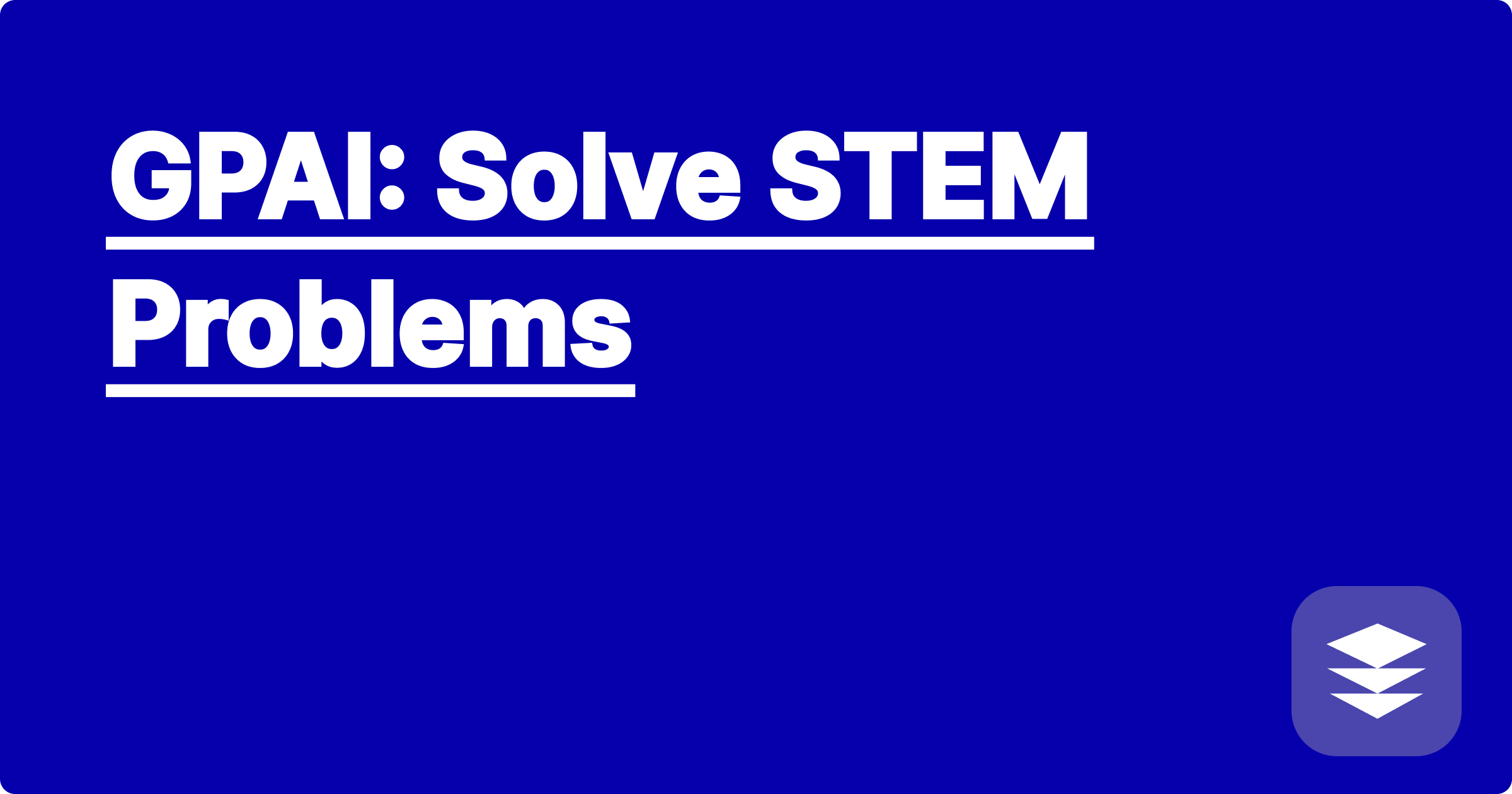
The world of STEM (Science, Technology, Engineering, and Mathematics) presents a constant stream of complex problems, ranging from intricate mathematical equations to designing sustainable energy solutions. These challenges often require extensive research, computational power, and creative problem-solving skills. Artificial intelligence (AI) is emerging as a powerful tool that can significantly augment and accelerate the problem-solving process in STEM fields, offering new pathways to discovery and innovation. AI can analyze vast datasets, identify patterns, generate hypotheses, and even assist in experimental design, offering an unprecedented opportunity to tackle some of the most pressing scientific and technological challenges.
For STEM students and researchers, understanding and leveraging AI tools is no longer optional but essential. The ability to harness the power of AI can significantly enhance research productivity, improve the accuracy of scientific models, and open up new avenues for exploration. As AI continues to evolve, its integration into STEM education and research will become increasingly critical for success in these fields. Embracing these tools will empower students and researchers to push the boundaries of knowledge and contribute to groundbreaking discoveries.
One pervasive challenge in various STEM disciplines, particularly in physics, engineering, and computer science, involves solving complex differential equations. Differential equations describe the relationship between a function and its derivatives, representing dynamic systems that change over time or space. These equations are fundamental to modeling phenomena like fluid flow, heat transfer, wave propagation, and population dynamics. However, finding analytical solutions to these equations can be incredibly difficult, especially for non-linear systems or those with complex boundary conditions. Traditional numerical methods can be computationally intensive and may not always provide accurate or stable solutions. This difficulty in solving differential equations often hinders progress in understanding and predicting the behavior of complex systems.
AI, specifically tools like Wolfram Alpha and symbolic computation libraries in Python like SymPy, offers a powerful approach to tackling the challenge of solving differential equations. Wolfram Alpha, a computational knowledge engine, can directly solve many types of differential equations, providing both analytical and numerical solutions. Users can input the equation using natural language or mathematical notation, and Wolfram Alpha will attempt to find a solution, often showing step-by-step derivations. Similarly, SymPy allows for symbolic manipulation of mathematical expressions, including solving differential equations analytically. These tools offer a more efficient and accessible way to solve differential equations compared to traditional methods, allowing researchers and students to focus on interpreting the results rather than getting bogged down in complex calculations.
To illustrate the process, consider a simple example of solving a first-order ordinary differential equation using Wolfram Alpha. First, navigate to the Wolfram Alpha website or use the Wolfram Alpha app. In the input field, type the differential equation, for example, "y' + 2y = x". Wolfram Alpha will interpret the input and display various information about the equation, including its type and general solution. The output will typically include both the general solution containing arbitrary constants and particular solutions based on initial or boundary conditions. If initial conditions are known, such as y(0) = 1, these can be added to the input, for instance, "y' + 2y = x, y(0)=1". Wolfram Alpha will then provide the specific solution satisfying these conditions.
Consider a more complex example involving the second-order differential equation describing damped harmonic motion: my'' + by' + k*y = 0, where m represents mass, b represents the damping coefficient, and k represents the spring constant. Inputting this equation into Wolfram Alpha will yield the general solution, which depends on the relationship between b, m, and k. The solution will be displayed in terms of exponential and trigonometric functions, representing the oscillatory and decaying behavior of the system. This example demonstrates how AI can handle more complex equations and provide valuable insights into the behavior of physical systems. Furthermore, AI can be used to visualize the solutions, providing graphical representations of the system's behavior over time.
Another practical application is modeling population growth using the logistic equation: dP/dt = rP(1-P/K), where P represents population size, t represents time, r represents the growth rate, and K represents the carrying capacity. AI tools can solve this equation, providing insights into how population size changes over time based on different growth rates and carrying capacities. This type of analysis is crucial for understanding ecological dynamics and managing resources.
Effectively using AI in STEM education and research requires a strategic approach. First, it's crucial to understand the underlying principles of the problem being solved. AI should be viewed as a tool to augment, not replace, fundamental understanding. Blindly relying on AI without grasping the concepts can lead to misinterpretations and incorrect conclusions. Second, it's important to verify the results obtained from AI. Compare the AI-generated solutions with known solutions or use alternative methods to validate the results. This ensures the accuracy and reliability of the findings. Third, explore different AI tools and platforms to find the ones that best suit your specific needs. Each tool has its strengths and limitations, and experimenting with various options can lead to more efficient and effective problem-solving.
Conclude by emphasizing the transformative potential of AI in STEM. Exploring the capabilities of AI tools like Wolfram Alpha, SymPy, and others will empower STEM students and researchers to tackle complex problems more efficiently and effectively. Embracing these technologies will unlock new possibilities for discovery and innovation, driving progress in various STEM disciplines. Start experimenting with these tools today and discover how they can enhance your STEM journey.